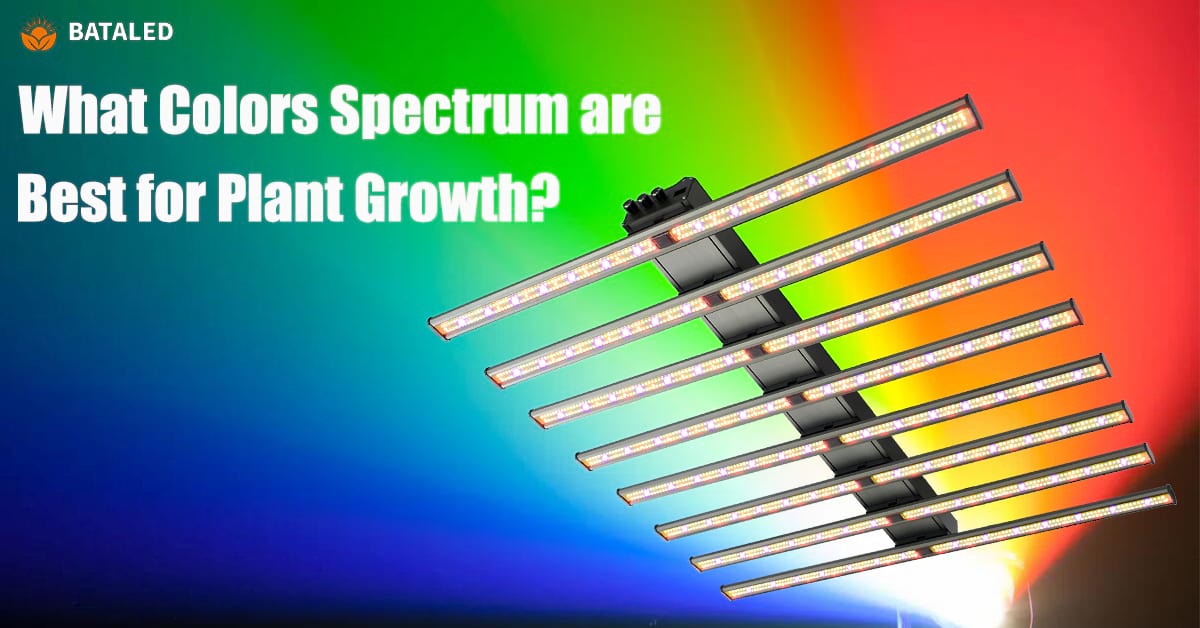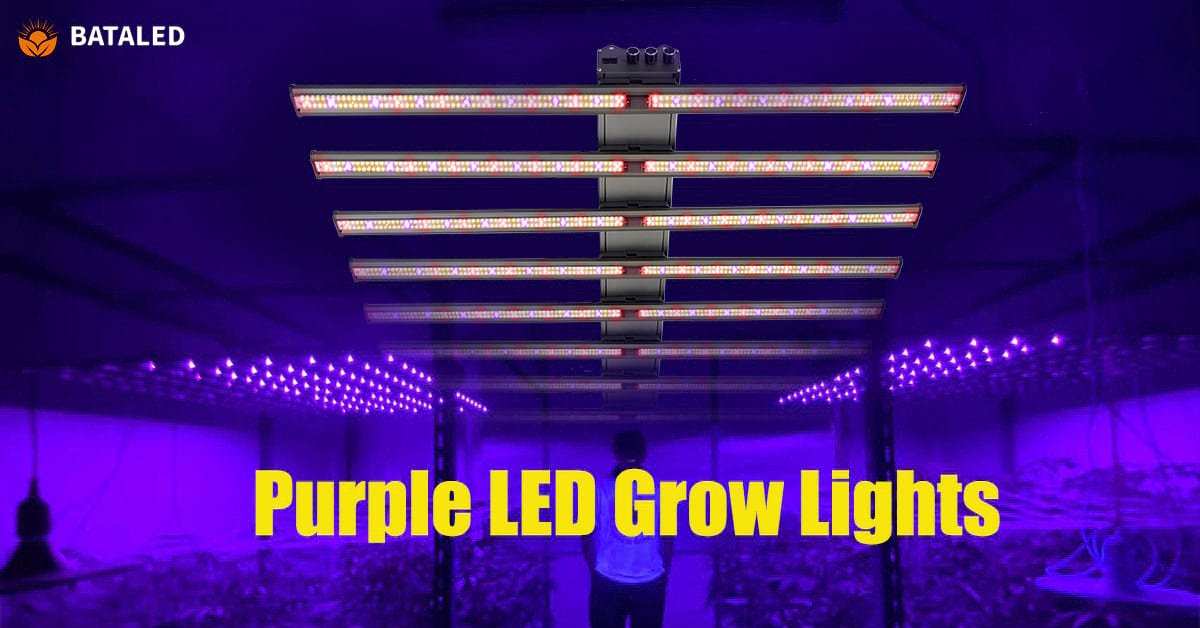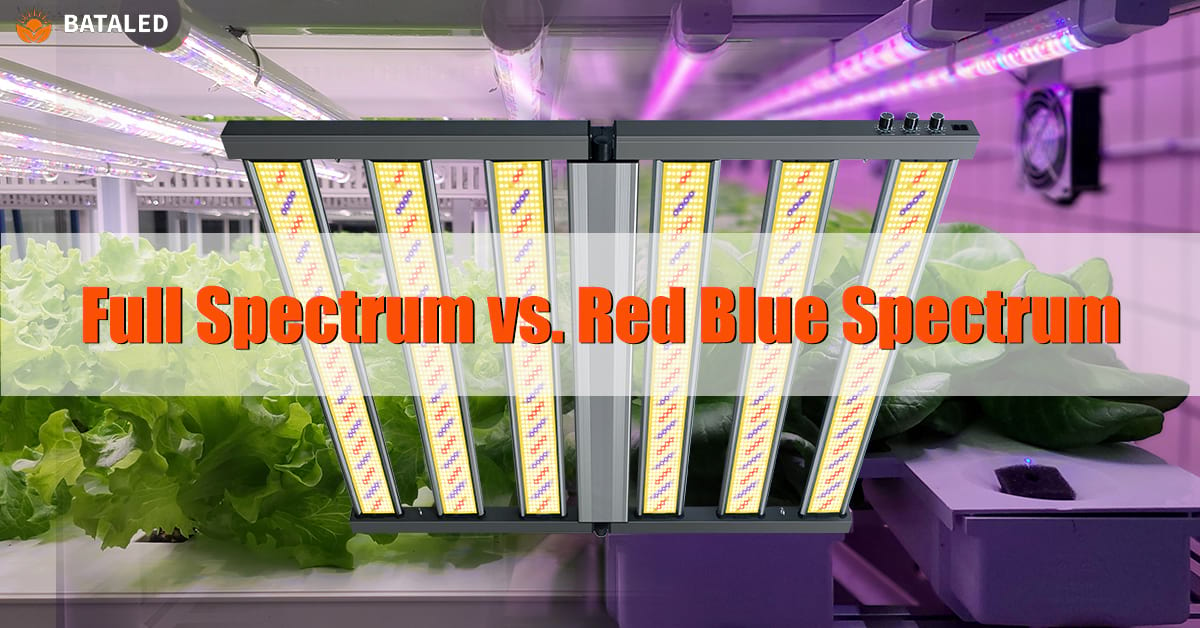LED Grow Lights vs Regular LED Lights: What’s the difference between grow lights and regular lights?
Have you ever faced this dilemma: Your houseplants aren’t getting enough sunlight due to limited conditions, but you hesitate to invest in pricey grow lights that cost several times more than regular lamps? So you try using ordinary lights instead—only to watch once-vibrant leaves turn yellow and wilt!
This contradiction hides a truth most overlook: Grow lights and regular lights are fundamentally different. Regular lights cater to human eyes, while grow lights are engineered for plant photosynthesis.
This article breaks down their core differences across 6 key aspects.
1. Specialized Grow Light Chips vs Generic LED Chips
To solve the mystery of yellowing leaves, start at the source: the LED chips. Just as human eyes need specific color temperatures for comfortable reading, plant chloroplasts require precise light wavelengths for photosynthesis.
Example:
- Grow Light: Combines 660nm red + 450nm blue + 730nm far-red (e.g., OSRAM chips) to trigger flowering.
- Regular Light: Uses warm/cool white LEDs (e.g., CREE chips) for ambiance.
While warm white LEDs create cozy lighting, grow lights emit invisible 660nm red “energy”—the key to photosynthesis. Plants can’t thrive on human-centric light any more than humans survive on food dye.
2. Tailored Spectra vs Human-Centric Light
If LED chips are the “ingredients,” the light spectrum is the recipe.
| Feature | Grow Lights | Regular Lights |
|---|---|---|
| Spectrum Range | Focuses on 400-500nm (blue) + 600-700nm (red); may include UV/far-red (e.g., 730nm) | Covers 400-700nm visible light; heavy on yellow-green (35% wasted on plants) |
| Spectrum Design | Targets chlorophyll absorption peaks; adds far-red for flowering | Prioritizes smooth, continuous spectra for visual appeal |
Example:
-
Grow Light: Blends white + 460nm blue + 660nm red + 730nm far-red + UV.
-
Regular Light: Emphasizes yellow-green (550nm), which plants reflect as “junk light.”
Grow lights act as precision “dieticians,” delivering 73% energy to chlorophyll’s sweet spots. Regular lights? They’re just feeding human eyes.
3. CRI: Beauty vs Biology
Color Rendering Index (CRI) reveals another clash: What looks vivid to humans might be useless to plants.
| Feature | Grow Lights | Regular Lights |
|---|---|---|
| CRI | Low (Ra<70); color accuracy irrelevant | High (Ra>85); critical for visual tasks |
| Impact | Leaves may appear purple—but plants thrive | Ensures true-to-life colors for humans |
Example:
-
Grow Light: Red/blue combo (CRI≈40) makes plants look purple.
-
Regular Light: Full-spectrum LEDs (CRI≈98) mimic sunlight.
Plants don’t care if leaves look purple—they only care if 660nm red light activates photopigments. Grow lights ditch the “beauty filter” to maximize photosynthetic fuel.
4. PPFD vs Lux: Two Rival Metrics
Light measurement splits into parallel universes:
| Feature | Grow Lights | Regular Lights |
|---|---|---|
| CRI | Low (Ra<70); color accuracy irrelevant | High (Ra>85); critical for visual tasks |
| Impact | Leaves may appear purple—but plants thrive | Ensures true-to-life colors for humans |
Example:
-
Grow Light: 1000W lamp → PPFD=800μmol/m²/s (looks dim at 20,000 Lux).
-
Regular Light: 100W bulb → 1,000 Lux (PPFD≈10μmol/m²/s, useless for plants).
These metrics never intersect—like parallel lines serving different masters.
5. PPF vs Lumen: The Photon War
The battle extends to total light output:
| Feature | PPF (Plants) | Lumen (Humans) |
|---|---|---|
| Definition | Total photosynthetic photons per second (μmol/s) | Total visible light perceived by humans (lm) |
| Efficiency | 1W red LED ≈ 4.2μmol/s (but only 10lm) | 1W white LED ≈ 130lm (PPF≈0.1μmol/s) |
Example:
-
100W Grow Light: PPF=420μmol/s (dim 1,000lm glow).
-
100W Regular Light: 10,000lm brightness (PPF=10μmol/s).
One feeds life, the other lights rooms.
6. Smart Features: Growth vs Glow
Grow lights outclass regular bulbs with surgical light control:
| Feature | PPF (Plants) | Lumen (Humans) |
|---|---|---|
| Definition | Total photosynthetic photons per second (μmol/s) | Total visible light perceived by humans (lm) |
| Efficiency | 1W red LED ≈ 4.2μmol/s (but only 10lm) | 1W white LED ≈ 130lm (PPF≈0.1μmol/s) |
Grow lights are “light chefs” programming growth recipes. Regular lights? Just delivery drivers.
Conclusion: Redefining Light’s Purpose
From LED chips to smart controls, grow lights and regular bulbs differ in 6 key dimensions. Their core divergence lies in how they define light:
-
Regular lights are human artists, crafting visual beauty with lumens and full spectra.
-
Grow lights are plant nutritionists, serving PPFD-optimized “meals” to chloroplasts.
Choose wisely—your plants aren’t paying the electric bill, but they’ll vote with their roots.
CATEGORIES
Recommended Post

Where It’s Legal to Grow Cannabis: Ultimate Tips & Cultivation Laws
About Author—Jose Li
Jose, a senior content creator at BATA LED, brings over 5 years of expertise in LED grow light. He delivers valuable insights to help growers and farmers better understand LED grow light technology, empowering them to boost crop yields and quality with advanced lighting solutions.


